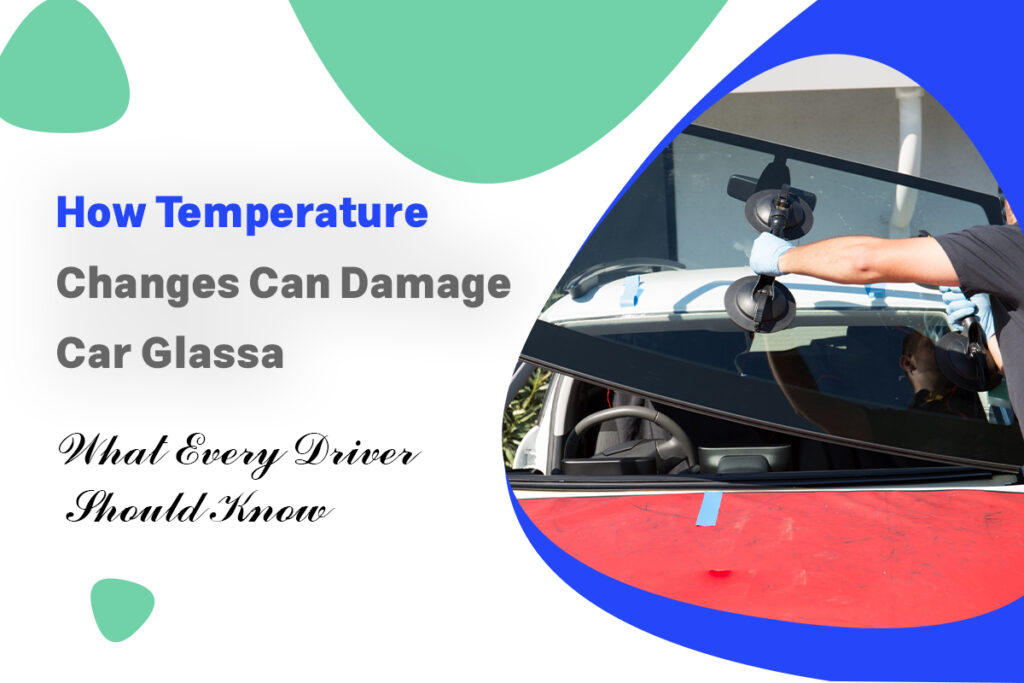Car glass may seem solid and unbreakable, but it’s far more vulnerable to temperature fluctuations than most people realize. Whether it’s a hot summer day or a freezing winter morning, rapid or extreme changes in temperature can cause serious damage to your vehicle’s windshield and windows. At Pro Car Glass Ltd, we’ve seen countless cases of cracked or shattered glass due to temperature-related stress—and in this guide, we’ll explain exactly how it happens and how to prevent it.
1. Glass Expansion and Contraction: The Science Behind the Damage
Glass expands when heated and contracts when cooled. While this is a natural process, problems arise when the temperature change is sudden or uneven. Car glass, especially tempered and laminated types, is engineered to withstand moderate changes, but extreme shifts can lead to stress fractures or cracks.
- Sudden heat (e.g., blasting a heater on a frozen windshield) can cause the inner layer of the glass to expand faster than the outer layer.
- Rapid cooling (e.g., pouring cold water on a hot windshield) can have the opposite effect—causing the outer layer to contract too quickly.
In both cases, the imbalance leads to internal stress—and eventually, cracks.
2. Common Scenarios That Cause Temperature-Related Damage
Hot Weather Risks
- Parking under direct sunlight for hours can cause the temperature of the windshield to rise above 70°C (160°F).
- Turning on the air conditioner at full blast immediately after getting in the car can create a sharp temperature difference between the inside and outside of the glass, resulting in stress cracks.
Cold Weather Risks
- Using hot water to defrost ice on your windshield is a common but dangerous mistake. The temperature shock can shatter the glass.
- Heated defrosters can also cause damage if used incorrectly—especially if the glass already has a chip or weak spot.
Frost and Ice Build-Up
- Ice forming inside small chips or cracks during cold weather can expand and deepen the damage.
- Repeated freeze-thaw cycles worsen these cracks, making repairs more difficult.
3. Pre-existing Chips Make Glass More Vulnerable
Even a tiny stone chip can become a major crack when exposed to temperature stress. The internal tension caused by expansion and contraction will target these weak points first. That’s why it’s essential to repair minor damage as soon as possible—before a temperature shift turns it into a full-blown crack.
At Pro Car Glass Ltd, we offer fast and affordable chip repairs that help prevent further damage from heat or cold.
4. How to Protect Your Car Glass from Temperature Damage
To reduce the risk of cracks and breaks due to temperature changes, follow these simple tips:
In Summer:
- Use a sunshade or windshield cover when parked in direct sunlight
- Open windows slightly to reduce internal pressure
- Avoid blasting the AC onto a hot windshield—let the car cool gradually
In Winter:
- Never use boiling water on frozen glass
- Turn on the defroster gradually
- Use a proper ice scraper and de-icer spray
- Park in a garage or covered area when possible
5. When to Call the Experts
If you notice:
- A new crack appearing suddenly after temperature changes
- A chip growing larger overnight
- A stress line forming near the edge of the windshield
…it’s time to contact a professional.
At Pro Car Glass Ltd, we specialize in detecting and fixing temperature-related damage before it compromises your safety. Whether it’s a quick repair or a full glass replacement, our London-based team is here to help—quickly and professionally.
Conclusion
Temperature extremes are one of the silent threats to your car’s glass integrity. By understanding how thermal stress works and taking a few precautions, you can avoid costly repairs and stay safe on the road. And if damage does occur, don’t wait—Pro Car Glass Ltd is just a call away.
Based in London – Serving all makes and models
Mobile repair service available
Contact us today for a free assessment or quote


